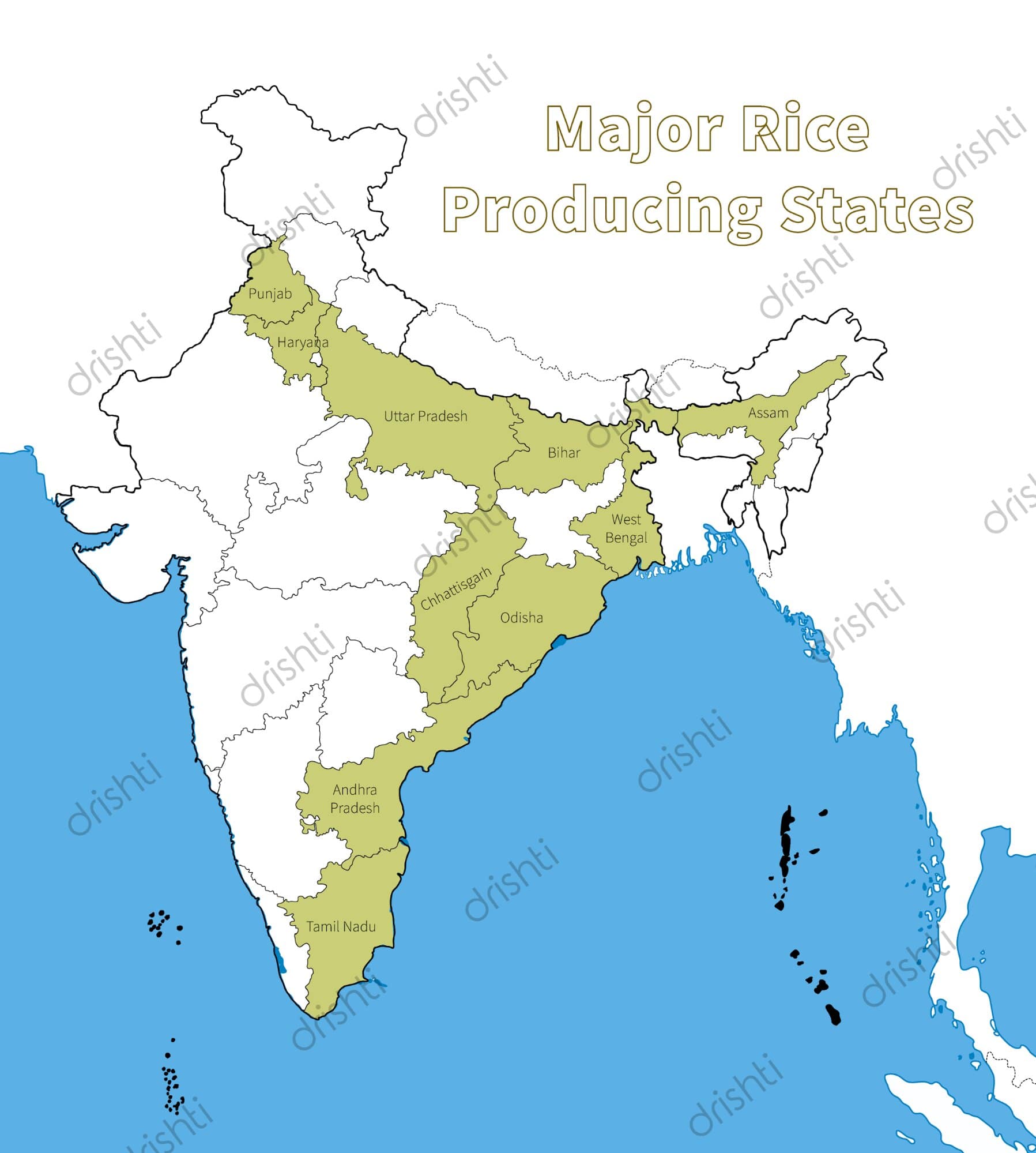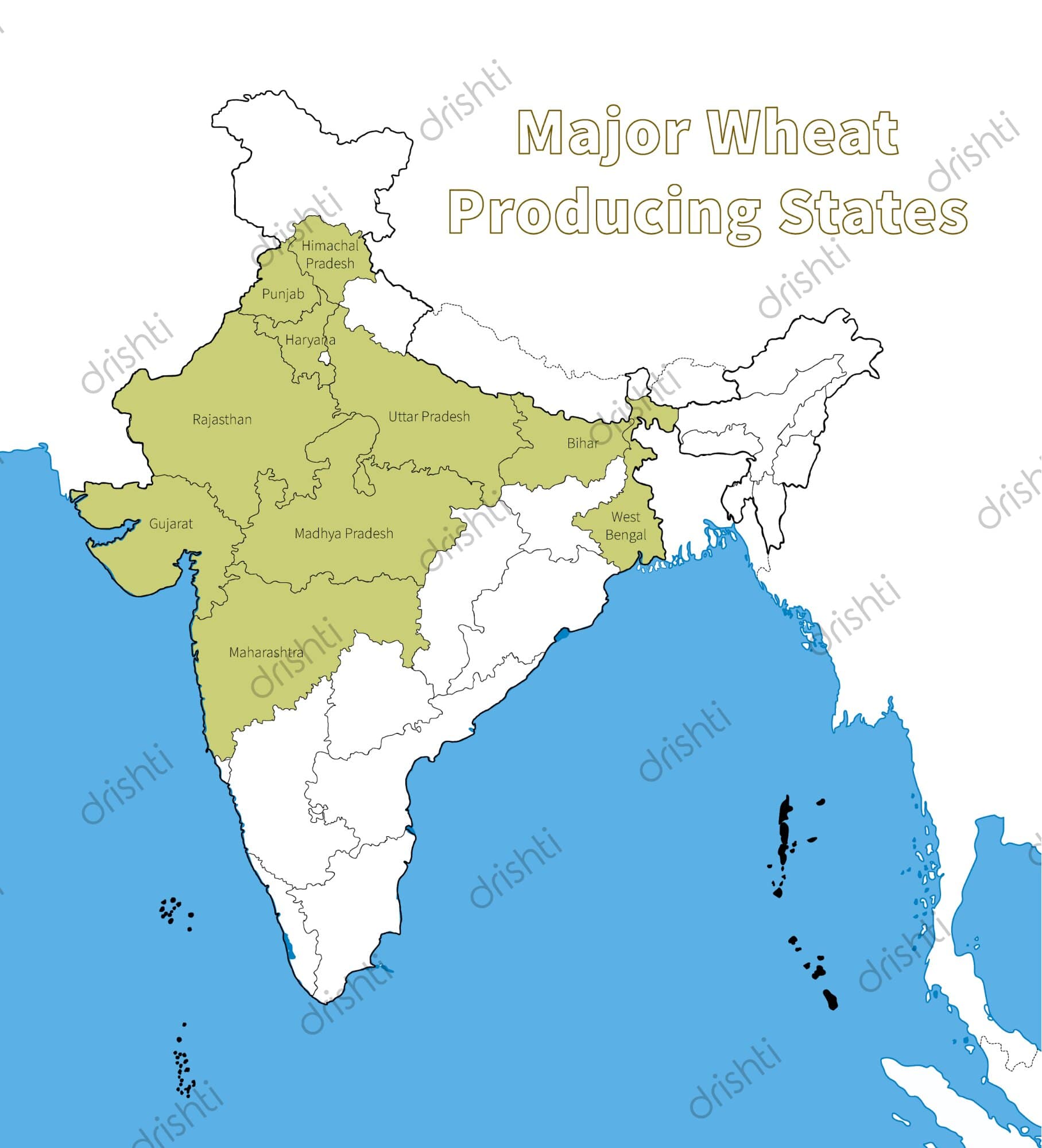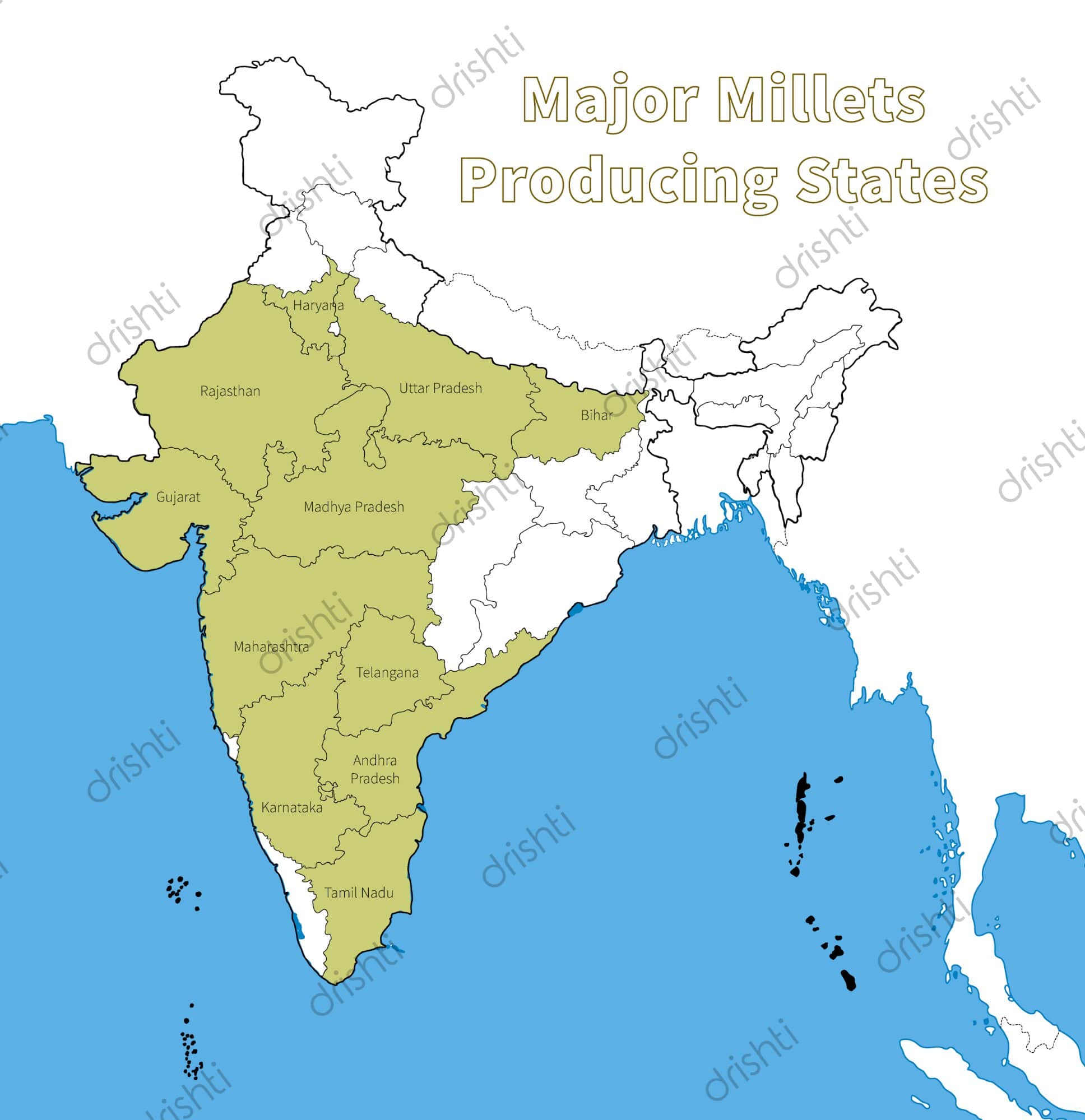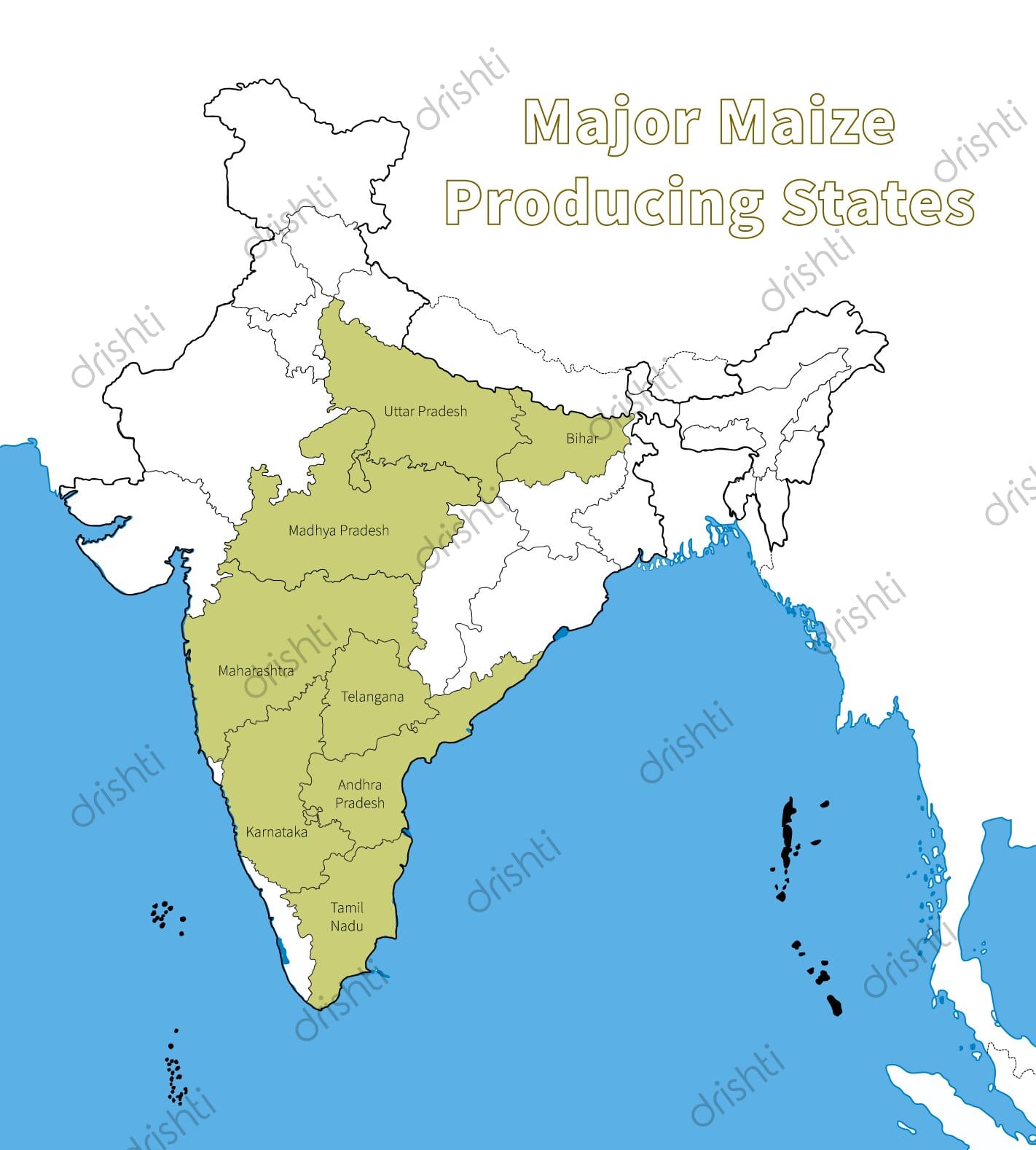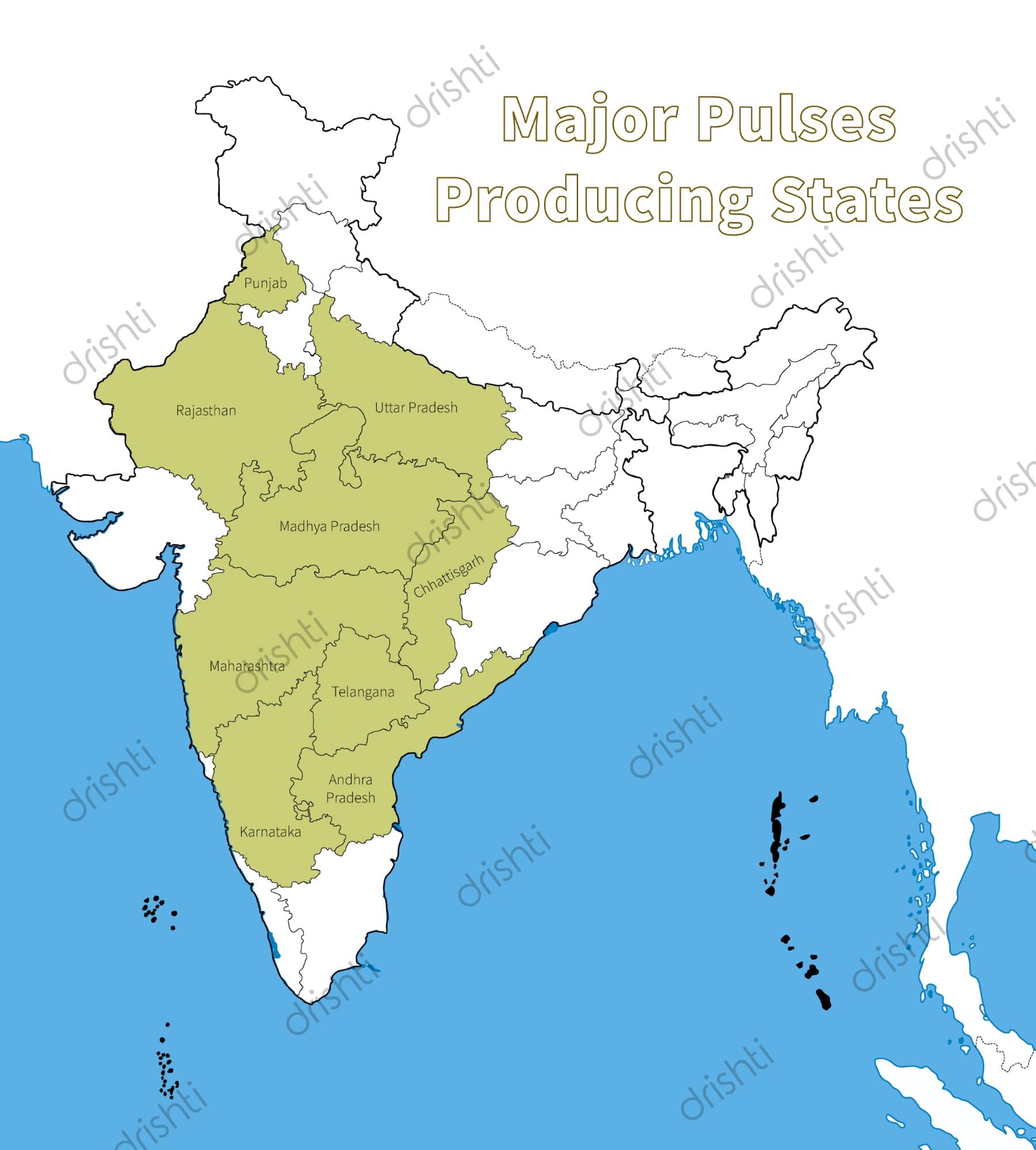Cropping Patterns and Major Crops of India: Part One
Two-thirds of India’s population is engaged in agricultural activities. It is a primary activity, which produces food grains and raw materials for industries. India is geographically a vast country so it has various food and non-food crops which are cultivated in three main cropping seasons which are rabi, kharif and zaid.
Major crops can be classified into-
- Food crops- Rice, Wheat, Millets, Maize and Pulses.
- Cash crops- Sugarcane, Oilseeds, Horticulture crops, Tea, Coffee, Rubber, Cotton and Jute.
Cropping Seasons
| S. No | Cropping Season | Time Period | Crops | States |
| 1. | Rabi | Sown: October-December Harvested: April-June |
Wheat, barley, peas, gram, mustard etc. | Punjab, Haryana, Himachal Pradesh, Jammu and Kashmir, Uttarakhand and Uttar Pradesh |
| 2. | Kharif | Sown: June-July Harvested: September-October |
Rice, maize, jowar, bajra, tur, moong, urad, cotton, jute, groundnut, soybean etc. | Assam, West Bengal, coastal regions of Odisha, Andhra Pradesh, Telangana, Tamil Nadu, Kerala and Maharashtra |
| 3. | Zaid | Sown and harvested: March-July (between Rabi and Kharif) |
Seasonal fruits, vegetables, fodder crops etc. | Most of the northern and northwestern states |
Major Food Crops
Rice
- Temperature: Between 22-32°C with high humidity.
- Rainfall: Around 150-300 cm.
- Soil Type: Deep clayey and loamy soil.
- Top Rice Producing States: West Bengal > Punjab > Uttar Pradesh > Andhra Pradesh > Bihar.
- It is the staple food crop of majority of Indian people.
- India is the second largest producer of rice in the world after China.
- In states like Assam, West Bengal and Odisha, three crops of paddy are grown in a year. These are Aus, Aman and Boro.
- National Food Security Mission, Hybrid Rice Seed Production and Rashtriya Krishi Vikas Yojana are few government initiatives to support rice cultivation.
Wheat
- Temperature: Between 10-15°C (Sowing time) and 21-26°C (Ripening & Harvesting) with bright sunlight.
- Rainfall: Around 75-100 cm.
- Soil Type: Well-drained fertile loamy and clayey loamy (Ganga-Satluj plains and black soil region of the Deccan)
- Top Wheat Producing States: Uttar Pradesh > Punjab > Madhya Pradesh > Haryana > Rajasthan.
- India is the second largest producer after China.
- This is the second most important cereal crop and the main food crop, in north and north-western India.
- Success of Green Revolution contributed to the growth of Rabi crops especially wheat.
- Macro Management Mode of Agriculture, National Food Security Mission and Rashtriya Krishi Vikas Yojana are few government initiatives to support wheat cultivation.
Millets (Nutri-Cereals)
- Temperature: Between 27-32°C
- Rainfall: Around 50-100 cm.
- Soil Type: Can be grown in inferior alluvial or loamy soil because they are less sensitive to soil deficiencies.
- Jowar- Rain-fed crop grown in the moist areas with less or no irrigation.
- Bajra- Sandy soils and shallow black soil.
- Ragi- Red, black, sandy, loamy and shallow black soils. (dry regions)
- Top Millets Producing States: Rajasthan > Karnataka > Maharashtra > Madhya Pradesh > Uttar Pradesh
- Jowar: Maharashtra > Karnataka > Madhya Pradesh > Tamil Nadu > Andhra Pradesh.
- Bajra: Rajasthan > Uttar Pradesh > Gujarat > Madhya Pradesh > Haryana.
- These are also known as coarse grains, which have high nutritional value. Ragi is very rich in iron, calcium, other micro nutrients and roughage.
- Jowar is the third most important food crop with respect to area and production.
- National Agricultural Insurance Scheme, Initiative for Nutritional Security through Intensive Millets Promotion are examples of government’s efforts to support millet production.
Maize
- Temperature: Between 21-27°C
- Rainfall: High rainfall.
- Soil Type: Old alluvial soil.
- Top Maize Producing States: Karnataka > Maharashtra > Madhya Pradesh > Tamil Nadu > Telangana
- India is the seventh largest producer worldwide.
- It is used both as food and fodder.
- Use of modern inputs such as High-Yielding Variety seeds, fertilisers and irrigation have contributed to the increasing production of maize.
- Technology Mission on Maize is one of the government’s initiatives for mazie.
Pulses
- Temperature: Between 20-27°C
- Rainfall: Around 25-60 cm.
- Soil Type: Sandy-loamy soil.
- Top Pulses Producing States: Madhya Pradesh > Rajasthan > Maharashtra > Uttar Pradesh > Karnataka.
- India is the largest producer as well as the consumer of pulses in the world.
- These are the major source of protein in a vegetarian diet.
- Major pulses grown in India are tur (arhar), urad, moong, masur, peas and gram.
- Being leguminous crops, all these crops except arhar help in restoring soil fertility by fixing nitrogen from the air. Therefore, these are mostly grown in rotation with other crops.
- National Food Security Mission for Pulses, Pulses Development Scheme and Technological Mission on Pulses are few of the government’s plans to support pulses production.
NOTE: Cash Crops will be covered in the Cropping Patterns and Major Crops of India: Part Two.
